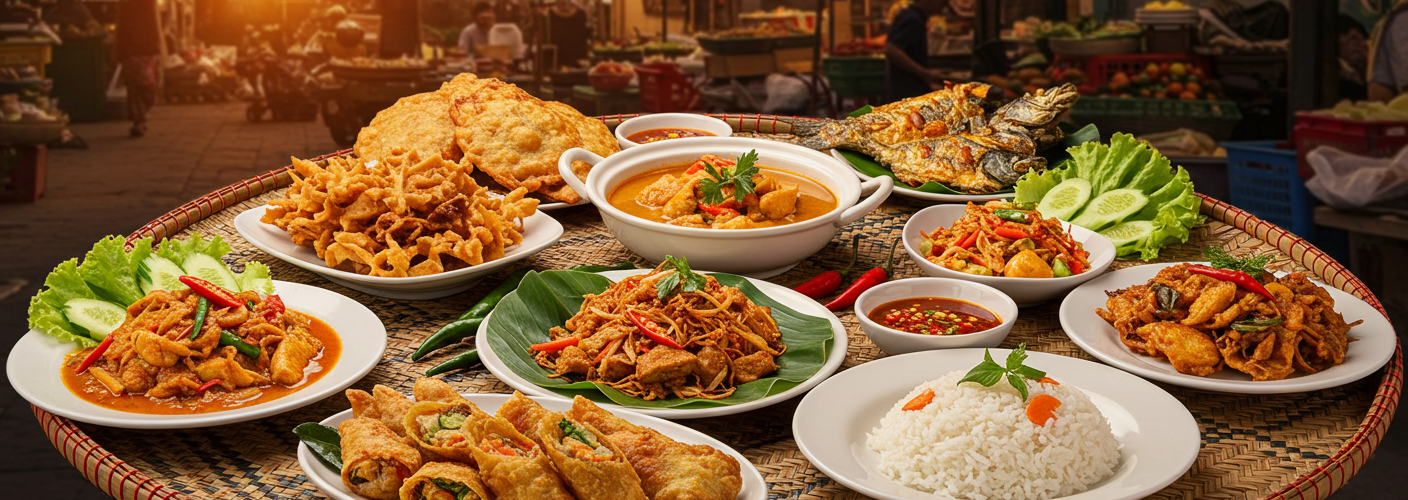Cambodia, a Southeast Asian nation known for its rich history and stunning landscapes, boasts a culinary tradition that is as vibrant and diverse as its culture. Cambodian food, or Khmer cuisine, offers a unique blend of flavors and techniques influenced by its neighboring countries while maintaining its distinct identity. For food lovers, exploring the culinary offerings of Cambodia is an exciting adventure that tantalizes the taste buds.
At the heart of Cambodian cuisine is rice, a staple food that accompanies most meals. The Cambodian phrase “bai” not only refers to rice but is also a term used to describe meals in general. From fragrant jasmine rice to sticky rice, Cambodians often incorporate rice into their daily diet, serving it alongside a variety of dishes.
One of the most iconic dishes in Cambodia is amok, a delicious fish curry cooked with coconut milk and a mix of spices, particularly lemongrass, kaffir lime leaves, and turmeric. Traditionally, it is steamed in banana leaves, resulting in a fragrant and flavorful dish that reflects the spirit of Cambodian cooking. While fish is commonly used, variations can be made with chicken or tofu, catering to diverse preferences.
Kuy teav, a popular breakfast dish, features rice noodle soup flavored with a rich broth made from pork or beef. Topped with fresh herbs, bean sprouts, lime, and chili, this dish is not only satisfying but also reflects the Cambodian philosophy of balancing flavors. The addition of condiments like soy sauce and chili paste allows each individual to personalize their bowl, making it a communal and interactive dining experience.
Another quintessential dish is lok lak, a stir-fried beef dish typically served with a lime and black pepper sauce, accompanied by rice and fried eggs. The dish is often garnished with cucumbers and tomatoes, providing a refreshing contrast to the rich flavors of the meat. Lok lak is a perfect example of how simplicity in ingredients can lead to extraordinary tastes when prepared with care and passion.
Cambodian street food is a must-try for any visitor eager to experience local flavors. Considered both affordable and delicious, street vendors offer a variety of snacks such as num banh chok, commonly known as Khmer noodles. This dish consists of rice noodles topped with a green fish curry sauce made from lemongrass and other fresh herbs. Served with an assortment of vegetables, it’s a favorite for many locals.
To satisfy a sweet tooth, kralan is a traditional Khmer dessert made from rice, coconut milk, and mung beans, cooked in bamboo tubes over an open flame. This delightful treat has a smoky flavor and a chewy texture, making it a popular snack to enjoy at festivals and gatherings.
When exploring Cambodian food, one cannot overlook the importance of fresh herbs and vegetables. Ingredients like basil, mint, and cilantro are frequently used to enhance the flavors and provide a refreshing element to various dishes. The use of fresh produce highlights the Cambodian approach to cooking, which prioritizes freshness and seasonality.
In conclusion, Cambodian cuisine offers a rich tapestry of flavors that reflect its long history and cultural influences. From the iconic amok to the bustling street food scene, the diverse array of dishes provides a delightful experience for anyone willing to embark on a culinary journey through Cambodia. For those seeking to explore new flavors, there is no better way than to immerse oneself in the vibrant world of Khmer cuisine.




Add comment